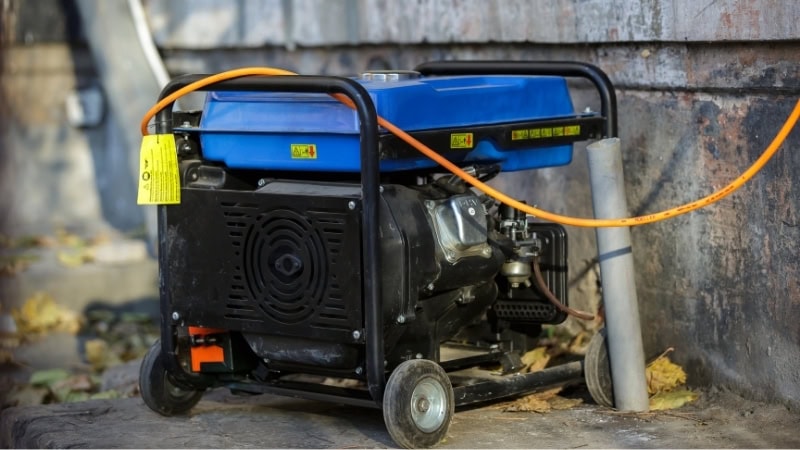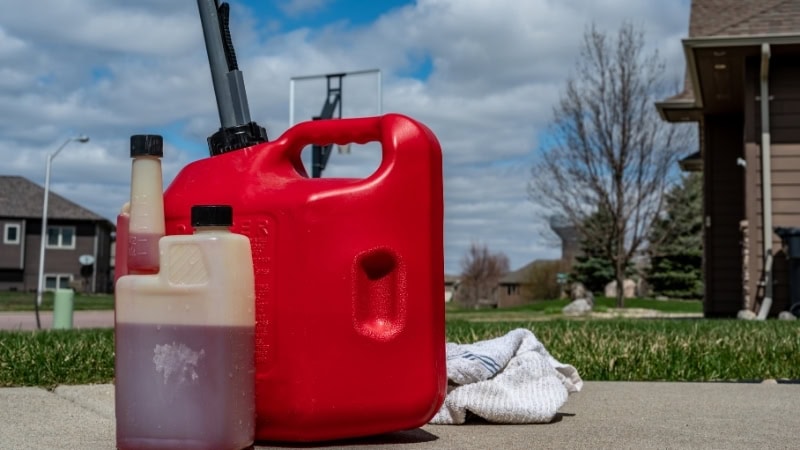Your generator’s job is to be ready. But after it’s saved the day, what happens next determines if it can do it again.
If you simply shut it off and shove it in a corner, you’re asking for trouble. Stale fuel, a dead battery, and internal corrosion are the silent killers of stored generators. The frustrating truth is that most generator “failures” aren’t failures at all—they’re the direct result of improper storage.
The solution is easier than you think. In the time it takes to watch a sitcom, you can prepare your generator for storage and guarantee it starts on the first pull when the next storm hits. Let’s get started.
Pre-Storage Checklist
First, let’s gather a few simple supplies. You probably have some of these already:
- Fuel stabilizer: This is a liquid you add to your gas tank to keep the fuel from going bad.
- Fresh oil: Check your generator’s manual for the right type.
- A new oil filter: If your generator has one.
- A funnel: For adding oil and fuel stabilizer without spills.
- A siphon pump: This helps you remove old gas from the tank.
- Clean cloths: For wiping up any mess.
- A battery maintainer: This is only for generators with an electric-start feature. It keeps the battery charged.
The 5-Step Process for Safe Generator Storage
Follow these five straightforward steps to prepare your generator for storage.
Step 1: Safety First
Before you do anything, safety is the top priority.

- Take your generator to a well-ventilated, open area outside. You should never run it in a closed space like a garage or shed because of the dangerous fumes.
- Start the generator and let it run for a few minutes to warm up the engine. This will make changing the oil later much easier.
- Turn the generator off and let the engine cool down completely. You don’t want to burn yourself on a hot engine.
- As an extra safety step, disconnect the spark plug wire. This prevents the generator from accidentally starting while you’re working on it.
Step 2: Protect the Fuel System (The Most Important Step)
This is the most common place where problems happen. When gas sits in a tank for months, it turns into a thick, sticky varnish that can clog the carburetor—a small but vital part of the engine. Fixing a clogged carburetor can be expensive. Here’s how to avoid that.
You have two good choices:

Option A: Add Fuel Stabilizer
This is the best method for most people, especially if you’re storing the generator for a season or less.
- Check your generator’s manual for how much fuel stabilizer to use. It’s usually a small amount for a full tank.
- Use your funnel to pour the stabilizer into the gas tank.
- Now, start the generator again and let it run for 5 to 10 minutes. This is a crucial step! It circulates the treated gas through the entire fuel system, protecting the carburetor from the inside out.
Option B: Drain the Entire Fuel System
If you know you won’t be using the generator for over a year, this is the safest option.

- Use your siphon pump to remove every drop of gas from the fuel tank. You can put this old gas in your car if it has a mostly full tank.
- After the tank is empty, try to start the generator. Let it run until it uses the last bit of fuel in the carburetor and stalls on its own. This ensures there is no fuel left inside to turn into gunk.
Step 3: Change the Oil and Filter
You change the oil in your car regularly, and your generator needs the same care. Used engine oil contains tiny bits of metal and other contaminants. If left in the engine during storage, these can cause rust and damage.
The best time to change the oil is right after you’ve warmed up the engine in Step 1. Warm oil flows out easily, taking more sludge with it.
- Place a drain pan under the oil drain plug.
- Remove the plug and let the old, dark oil drain out completely.
- Once drained, replace the plug.
- Use your funnel to add the fresh, new oil. Check your manual for the correct type and amount. Be careful not to overfill it!
- If your generator has an oil filter, now is the time to unscrew the old one and replace it with a new one.
Step 4: Battery Care for Electric-Start Generators
If your generator has a handy electric-start button, you need to take care of its battery. A battery that is left unused for months will lose its charge and can be permanently damaged.
- Find the battery (check your manual for its location) and carefully remove it.
- Look at the battery terminals. If you see any white or bluish crusty stuff, you can clean it with a mix of baking soda and water and a wire brush.
- This is the key step: connect the battery to a “battery maintainer” or “trickle charger.” This small device plugs into a wall outlet and gives the battery a tiny, safe amount of charge to keep it full while in storage. Don’t just leave it on a concrete floor, as this can drain it.
Step 5: Final Cleanup and Inspection
Give your generator a little spa treatment before its long nap.
- Take a clean, dry cloth and wipe down the entire outside of the generator. Remove any dirt, grass, or oil. A clean machine is less likely to rust.
- Locate the air filter—it’s usually under a small cover on the side of the engine. Remove it and tap it gently to get the dust out. If it looks very dirty or damaged, it’s a good idea to put in a new one.
- Do a quick visual check. Look for any loose wires, cracks, or anything else that doesn’t look right. It’s easier to fix a small problem now than a big one later.
Where to Store Your Generator
Now that your generator is prepped, where should you put it?
The Perfect Spot: You want a place that is cool, dry, and clean. A shelf in your garage or a spot in a storage shed is ideal.
Places to Avoid:
- Damp basements: Moisture in the air leads to rust.
- Direct sunlight: The sun’s rays can damage plastic and rubber parts over time.
- Dirty or dusty areas: Dust can get into the air filter and engine.
To Cover or Not to Cover? Yes, you should cover it! Use the cover that came with your generator or a breathable fabric tarp. Avoid using a plastic tarp directly on the generator, as it can trap moisture inside and cause rust.
Frequently Asked Questions
Can I just let the generator run out of gas and leave it?
Letting it run out of gas is a good way to drain the carburetor, which is better than leaving old fuel in it. However, for long-term storage, you should still change the oil to protect the engine from the inside.
How long can gas stay in a generator with a stabilizer?
A high-quality fuel stabilizer can keep gas fresh for up to 12 to 24 months. If you’re unsure how long it will be in storage, it’s always safer to drain the fuel system completely.
Is it okay to store my generator in my shed where it gets very cold?
Yes, cold temperatures themselves won’t damage your generator. In fact, a cool, stable environment is ideal. The real enemy is moisture, which can cause rust. If your shed is dry, it’s a fine storage spot. Just make sure you’ve used a fuel stabilizer, as gas can still degrade over time, even in the cold.
What do I need to do before using my generator after storage?
It’s simple! If you followed these storage steps, you just need to:
- Reconnect the spark plug wire and install the battery if you removed it.
- Check the oil level to make sure it’s still full.
- If you drained the fuel, simply fill the tank with fresh gasoline.
- Then, you should be able to start it up normally!
Conclusion
Taking about 30 minutes now to properly store your generator might feel like a small chore, but it’s one that pays off hugely. It saves you from the frustration and expense of repairs down the road. Most importantly, it gives you the confidence that when the lights go out, your generator will roar to life, ready to protect your home and family once again. By giving your generator a little care today, you ensure it will be there for you when you need it most.
